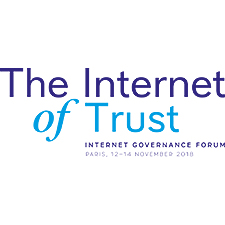The past, the present and the future for multistakeholderism
12 Nov 2018 10:45h - 12:15h
Event report
[Read more session reports and live updates from the 13th Internet Governance Forum]
The battle for the multistakeholder model took more than 10 years. Now we have all stakeholders involved in the Internet Governance Forum (IGF) process, especially civil society. However, the multistakeholder model is not perfect, it has drawbacks: the actual influence of stakeholders is different, some stakeholders are overrepresented, sometimes the model does not suit the goals of policymaking. The Generic Names Supporting Organization (GNSO) is one example. However, the value of the multistakeholderism should not be ignored. There is more work to be done further to develop it.
The moderator of the workshop, Ms Yeseul Kim, IGF Ambassador, asked the participants to share their thoughts about the emergence of the IGF, how the multistakeholder model is practiced and how it can be developed in the future.
Mr Marcus Kummer, Independent Consultant for Internet Governance and Policy) mentioned the phenomenon of inflation of the term multistakeholderism, as many people do not actually understand what is behind the it. In the 90s the ‘silver bullet’ for the problems of developing organisations like ICANN was public-private partnership, and the multistakeholder model was not much in use. Then there was a painful exercise to establish the right procedure of participation during the two phases of the World Summit on the Information Society (WSIS) forum. And the Working Group on Internet Governance (WGIG) finally came up with the multistakeholder model for IGF composition. Kummer also voiced concern regarding the true multistakeholder nature of ICANN, especially in regard to the advisory role of governments that some countries do not feel comfortable with. On the other hand, some people think that governments are too powerful as they have a way to influence the ICANN Board.
Mr Ayden Férdeline, Fellow, Mozilla Foundation, expressed his critical attitude toward multistakholderism in general, because ‘it is not particularly representative, accountable and does not lead to a good policy development’. He supported his argument with the ICANN example that some of its stakeholders ‘have more muscle than others’ and civil society is brushed aside and ignored mostly. However, Ferdeline argued that multistakeholderism is something that is desirable and to be protected despite the fact that still there are many cases where the multistakeholder model has proved to be imperfect, including the work of GNSO.
Ms Sandra Hoferichter, Secretary-General, EuroDIG, said that the multistakeholder model is the best model to move forward. The multitakeholder model should be the model for Internet Governance, but it’s not perfect. Hoferichter endorsed the big achievement of the WSIS process that civil society has gained recognition in discussions. But then she noted, that now it is ‘the biggest stakeholder group at least in the IGF and this has also some backlash because we are missing other stakeholders – technical community, private sector, like we missed civil society in the past’. She noted that missing one stakeholder will weaken the whole process, so we should think of proper engagement mechanisms. Hoferichter mentioned the practice of preparing messages as an outcome of IGFs, which is better than drafting and negotiating declarations, and still useful for moving the agenda forward. Finally, she stressed both multilateral and multistakeholder models should exist and solve the problems related to the scope of the meetings.
Mr Kuo Wu, APNIC, provided insights from the technical community perspective. He used the IETF standards drafting process to demonstrate multistakeholder openness and transparency. Wu raised the necessity to find some ways to let the voices of stakeholders be heard, where there is already a regulation imposed by governments, and used the case of Uber as an illustration. In addition, he stressed the importance of the technical community as it runs the critical Internet infrastructure. Finally, Wu came up with two important implications for the multistakeholder model: it has a good influence on drafting better policies, and it helps to implement the policy for regulation of emerging technologies like 5G by providing relevant expertise.
By Ilona Stadnik
Related topics
Related event

